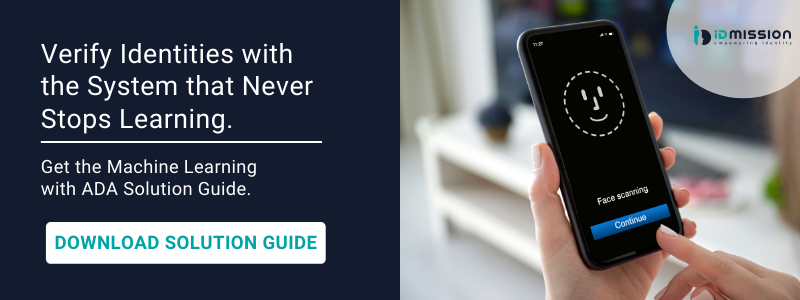How Machine Learning and Biometric Technology Work Together
Share this article:
We’ve entered an era of big data and artificial intelligence, with systems becoming even more intelligent across many applications. At the very core of the intelligent systems that we have today is machine learning.
Biometric technology continues to develop as an essential security technology for intelligent systems across multiple applications, ensuring the security of networks, computers, data, physical premises, and stand-alone equipment. The latest machine learning algorithms can be applied to today’s biometric systems to achieve the highest level of performance.
Both machine learning technology and biometrics have changed the world as we know it. But, what happens when the two work together? Can implementing machine learning improve the way biometric technology works? Here’s a closer look at how machine learning and biometric technology can work together to improve the security of your business.
Machine Learning & Biometrics
What is Machine Learning?
First, it’s important to understand what machine learning is and how it works. Machine learning is a type of artificial intelligence (AI) that’s based upon the idea that systems can learn from data, identify patterns, and make decisions with little human intervention. It involves a machine doing the systematic study of scientific algorithms that offer the system the ability to simulate learning like a human without explicit programming.
Examples of Machine Learning
You may be surprised to find out that machine learning and AI work behind the scenes in many ways, optimizing business operations, informing business decisions, and impacting our everyday lives. A couple of examples of machine learning include:
- Hello Barbie – Hello Barbie, a toy, uses machine learning along with natural language processing and advanced analytics to listen to a child, and then respond. A microphone on the Barbie transmits what is said to servers, the recording is analyzed, and appropriate responses are transmitted back to Barbie in less than a second, so she’s able to respond to a child. Answers to questions that may be used in conversation later are stored.
- GE Power – To provide energy in the 21st century, this company uses machine learning, the Internet of Things (IoT) technology, and big data to build what they call an “internet of energy.” Machine learning and advanced analytics are used for predictive maintenance and power, as well as business and operations optimization, so GE Power can work towards their goal of a “digital power plant.”
What is Biometrics?
Biometrics recognition or authentication involves identifying individuals based upon unique features that an individual possesses. Those features are turned into data that authenticates that individual’s identity. Biometrics can be broken down into two categories: behavioral and physiological characteristics. Behavioral characteristics may include voice, gait, or typing rhythm. Physiological characteristics may include face, retina, fingerprints, or iris.
Benefits of Machine Learning in Your Biometrics System
Within recent years, work on machine learning has been accelerated. With the ability to mine, analyze, and even interpret larger files, machine learning methods are being applied to many different disciplines today, including biometrics. By combining biometric technologies with machine learning and artificial intelligence, you enjoy multiple benefits, including:
- Benefit #1 – Machine Learning Removes Instances of Human Error and Intervention – Human error and intervention are two of the reasons most biometrics systems have not achieved 100% performance. When you add machine learning to your system, it eliminates the instances of human error and intervention, improving overall performance and optimizing security.
- Benefit #2 – Machine Learning Expedites the Process – When machine learning is used within biometrics systems, it’s able to detect patterns in behavior and intent. This can speed up the process, providing an improved experience for consumers.
- Benefit #3 – Machine Learning Simplifies Data Sets – When you add machine learning to a biometrics system, it’s able to not only simplify large data sets, but detect patterns in those large data sets. When the machine is trained to detect patterns, the patterns detected in data lead to conclusions on both intents and behaviors that make a biometrics system smarter and more accurate. For example, with machine learning, the system can detect unusual behavior based upon those data patterns or potentially track employee behavior and detect any anomalies.
The Platform That Brings Together Machine Learning and Biometrics
At IDmission we bring together machine learning technology and biometric technology with the Ada platform, which is our Automated Biometric Identification System (ABIS). With Ada, our models help process data from millions of sources each month, and Ada uses multiple internal artificial intelligence models we’ve developed to analyze input from the four types of biometrics we support, along with documents of every type, to authenticate documents and determine identity.
All those AI models received by Ada come from our Ground Truth (GT) Engine, which uses industry-leading machine learning tools that our engineers and data scientists developed. It’s the GT Engine that’s responsible for the continuing retraining, performance, and accuracy of all IDmission’s artificial intelligence matters. Our GT Engine never stops learning, continually curating real-world data.
Ada connects to more than 70 third-party integrations to supplement output, adding additional data points that boost IDmission’s deliverables. A few of Ada’s services that we offer our customers to boost their security and improve consumer satisfaction include multi-model biometric support, global AI to reduce racial bias, passive liveness detection, non-repudiation capture, de-duplication of selfies in the database, and more.
Machine Learning, Biometrics, and Your Business
At IDmission, we’re working on using the latest technologies to offer you biometric identity solutions that come with future-proof architecture and secure design. Our biometric systems help reduce false identity risks, enabling you to protect your company and consumers who trust you. When you depend on ID verification via biometrics, you can rely on us as we combine the best of artificial intelligence and passive biometrics to ensure your customers have an effortless experience.


Leave a Comment